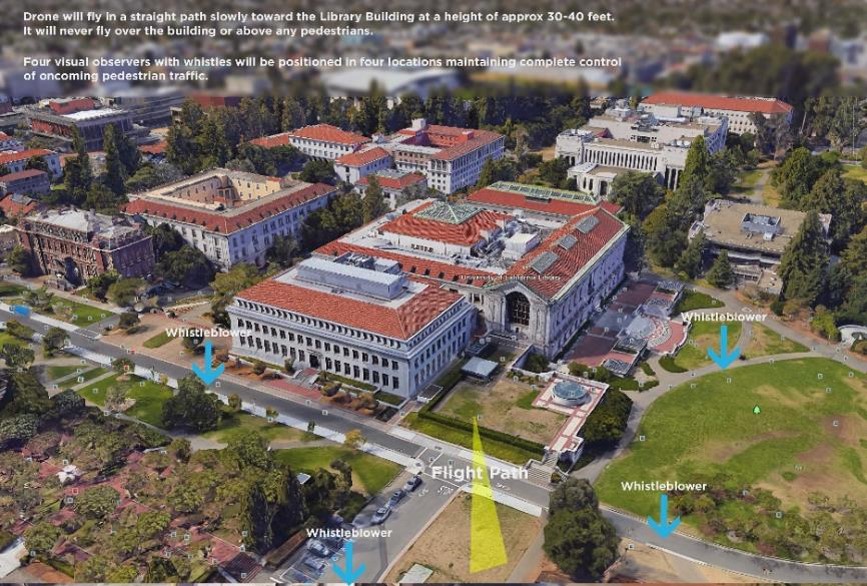Chapter 8 Crew Coordination Standards
8.1 Crew Participant Minimum
A member of the Flight Crew must be actively involved in the safety of the UAS activity - this includes participation in pre-flight activities such as planning and briefing, have a well-defined role during the UAS activity and post-flight cleanup. A spectator or spectator crowd may not be ‘deputized’ to a crew member status to circumvent FAA regulations regarding flight operations over people.
8.2 Pre-Flight Briefing
Briefing is an essential part of conducting UAS activity in a safe and efficient manner. On the day of the flight, prior to the start of UAS activity, the RPIC shall brief all Flight Personnel on the goals, objectives and key safety considerations of the planned UAS activity. The intent is to cover all operation aspects of the UAS activity and to promote full understanding among all Flight Personnel. The guidelines for conducting Flight Personnel briefings are listing below. At a minimum, the RPIC must cover the following in a briefing:
General Information about the Flight
- Type of Flight (training, maintenance, normal)
- UAS Status - condition, recent maintenance, fuel or battery state
- Any mission issues the ground crew should be aware of?
Crew Members & their roles and responsibilities. List out by each of the flight phases:
- Before launch
- During flight
- In case of an emergency
- After landing
Mission Information
- Primary mission goals, any secondary goals
- Flight Path Detail - estimated duration, flight altitude, flight pattern
- Landing & Recovery Procedures
Site Description and Hazard Analysis
- Hazards and Risks
- Boundaries
- Areas of Concern
- Non-participating Persons
- Nearby airports or areas of air traffic
Weather
- Current forecast
- Weather forecast for the duration of the flight activity
- Potential weather conditions to monitor
Communication Procedures
- Chain of command
- Communication phrasebook
Mission or Flight Stop/Pause Conditions
- Go/No-Go Conditions (in-flight)
- Mission Stop Checks (at what conditions should the overall mission be stopped)
- Flight Stop Checks (at what conditions should an individual flight be stopped)
- Flight Pause Checks (at what conditions should an individual flight be paused)
Emergency Management - Roles and Responsibilities during the following situations:
- Non-participating person incursion in flight area
- Hazardous Weather Conditions
- Low Battery or UAS Status Issue
- COllision with Hazard
- Fly Away or Loss of GPS
- Lost link or C2 link failure
- In-Flight or Post-Flight Fire
- Pilot Incapacitation
- Manned Aircraft Encroachment in flight area
Remind the entire crew of the Sterile Cockpit Requirement
Public safety should be addressed at every briefing to mitigate all risks from UC flight operations.
8.3 Flight Team Member Positioning
The following factors should be considered when positioning the Flight Team members:
- Visual coverage of the operating site
- Position in relation to the sun to avoid visual impairment
- Physical obstacles such as overhanging trees, rocks, buildings, power lines etc.
- Terrain topography, avoid steep slopes or uneven ground
- Effects such as wind shear from nearby trees, buildings etc
- Proximity to buildings and structures

Figure 8.1: Planning for Safety at UC Berkeley
8.4 Sterile Cockpit Requirement
After the pre-flight briefing and until the completion of the final cleanup, the RPIC, all Visual Observers and all Ground Support Personnel are prohibited from engaging in non-essential duties or activities.
Example failures seen within the UC System:
- RPIC became distracted while talking with a student and did not recognize that the unmanned aircraft was on a collision course with a floodlight.
- An Ground Support Personnel was engaged in conversation and did not adequately check the unmanned aircraft for loose linkages in between flights, leading to an in-flight failure of the elevator.
- The RPIC was interrupted by a curious bystander.
- Extraneous conversation led to forgetting of the detachable wings of a fixed-wing unmanned aircraft at the lab.